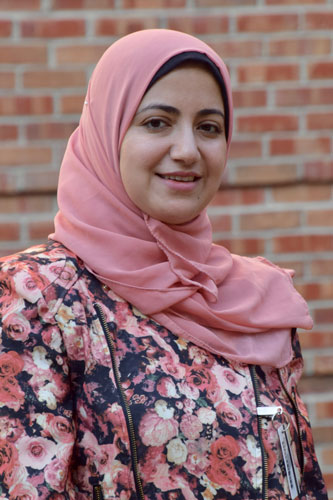 Dina Moustafa
Dina Moustafa
Dina Moustafa, assistant lecturer, Zagazig University (Egypt)
Jeffrey D. Parvin, faculty mentor
Triple-negative breast cancer (TNBC) represents approximately 10-15% of all breast cancers and has a poor outcome compared to the other subtypes of breast cancer. Defects of DNA-repair pathways including mutation of the BRCA1 gene are reported in many TNBC cases, providing a rationale for PARP inhibitors treatment. However, resistance to these drugs developed after a certain time.Our project addresses one of the possible mechanisms of resistance to PARPi drugs and how to overcome it.
We use a tissue culture cell line called MDA-MB-436 that has a mutation in BRCA1 and that models TNBC. We down-regulate the EMI1 gene by transfection of different siRNA in MDA MB 436 cells and test for the consequences of this downregulation on the RAD51 protein level by Western Blot and also on sensitivity to different PARPis compared to the control group using cell viability assay test (alamarBlue cell viability reagent).
TNBC can develop resistance to PARPis by down-regulation of EMI1 gene which is followed by increase of RAD51 levels that can fairly repair the DNA break created by PARPis, this resistance can be overcome by adding CHK1 inhibitor in a dose specific manner that make the cells sensitive again to PARPis. We envision that our results will address the possible mechanisms of resistance to this type of anti-cancer drug and help lead to a durable cure for TNBC.